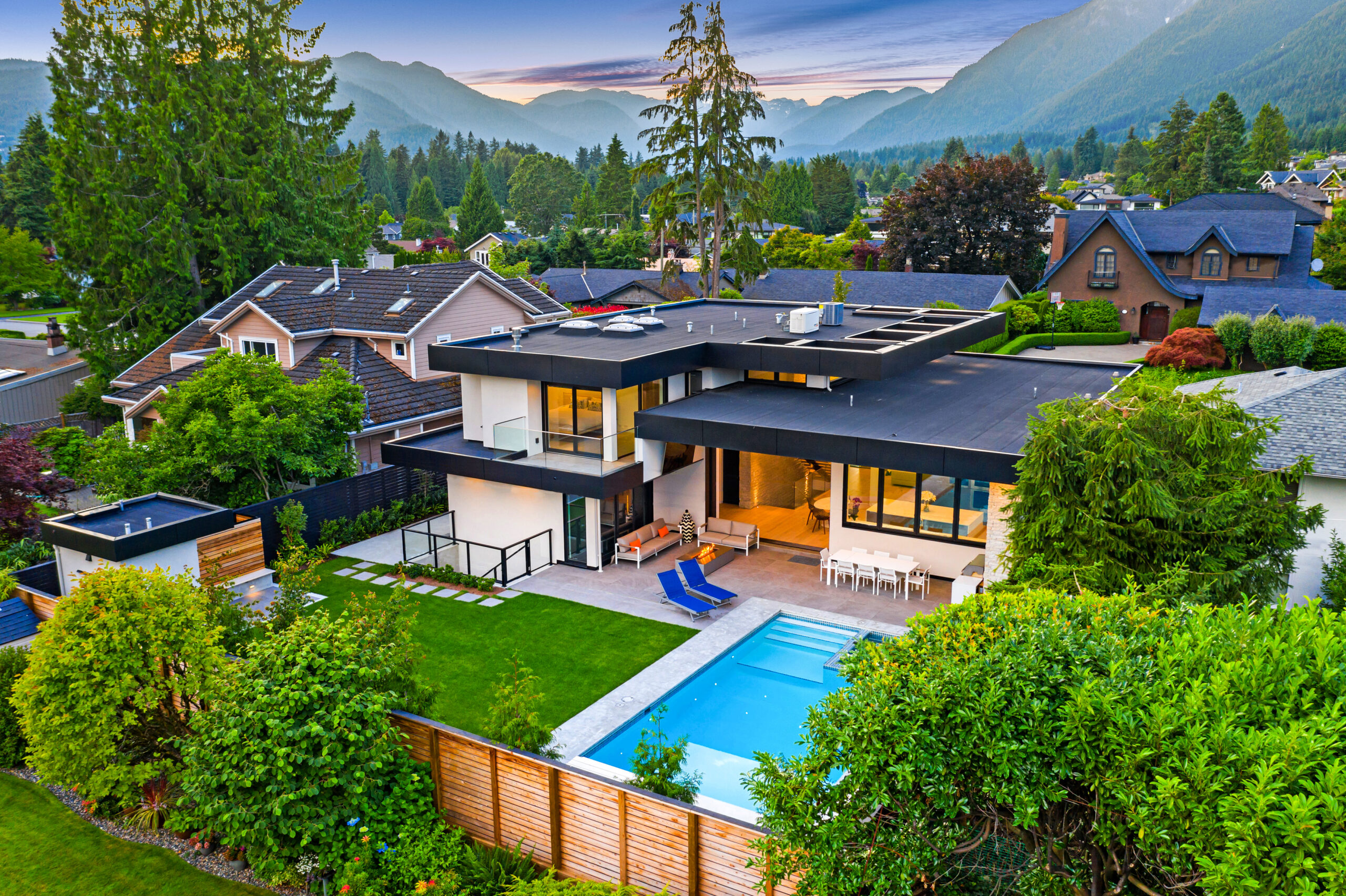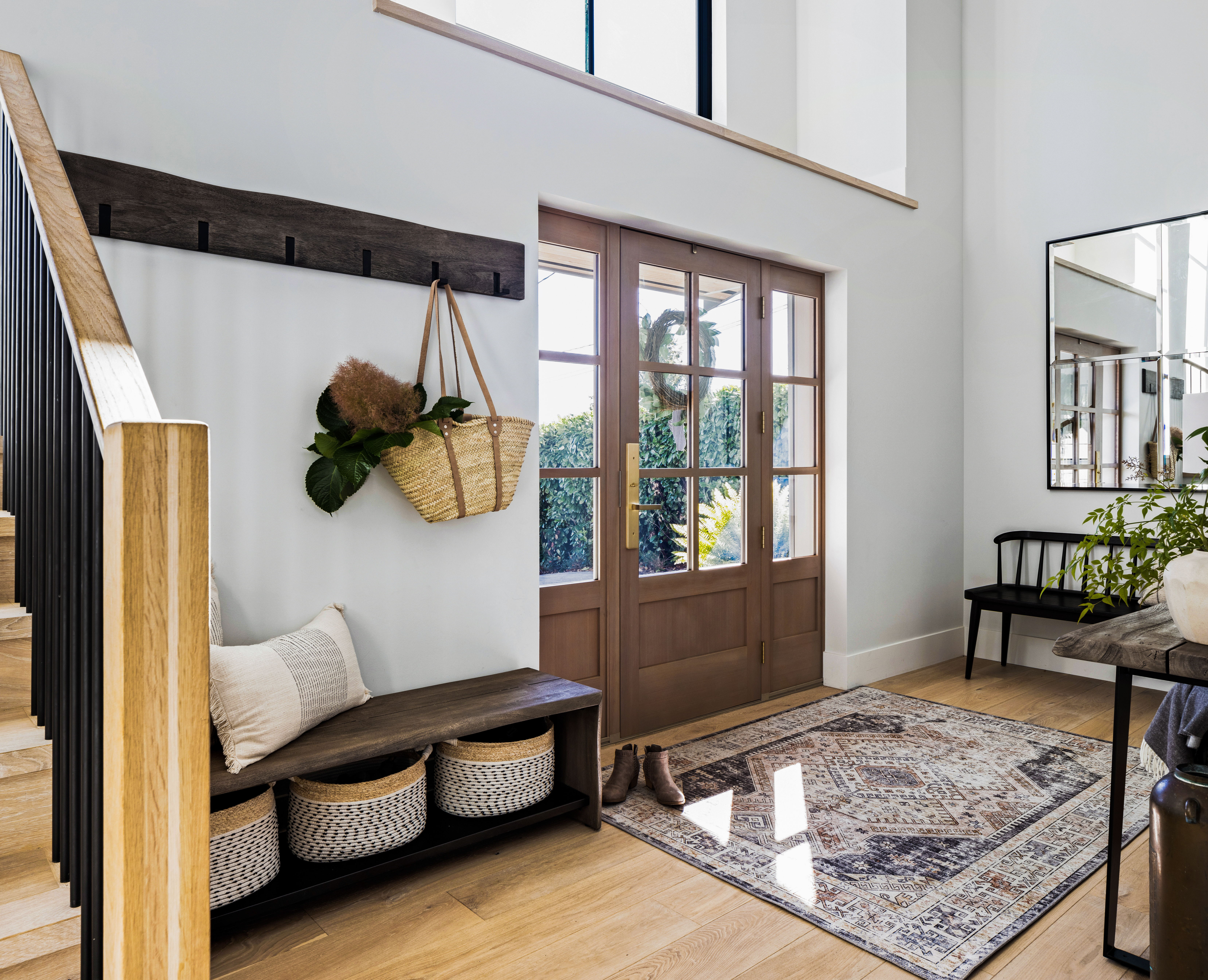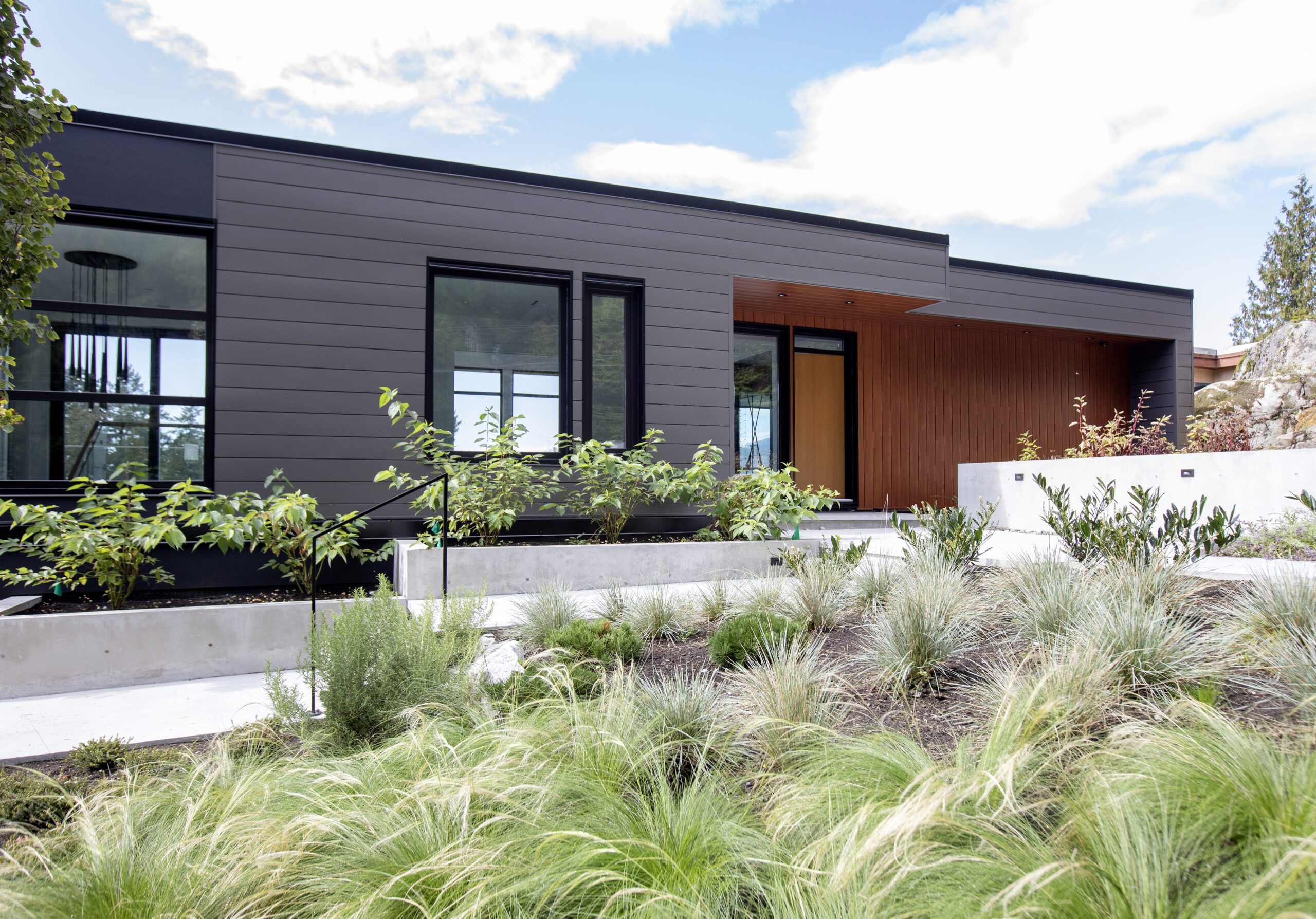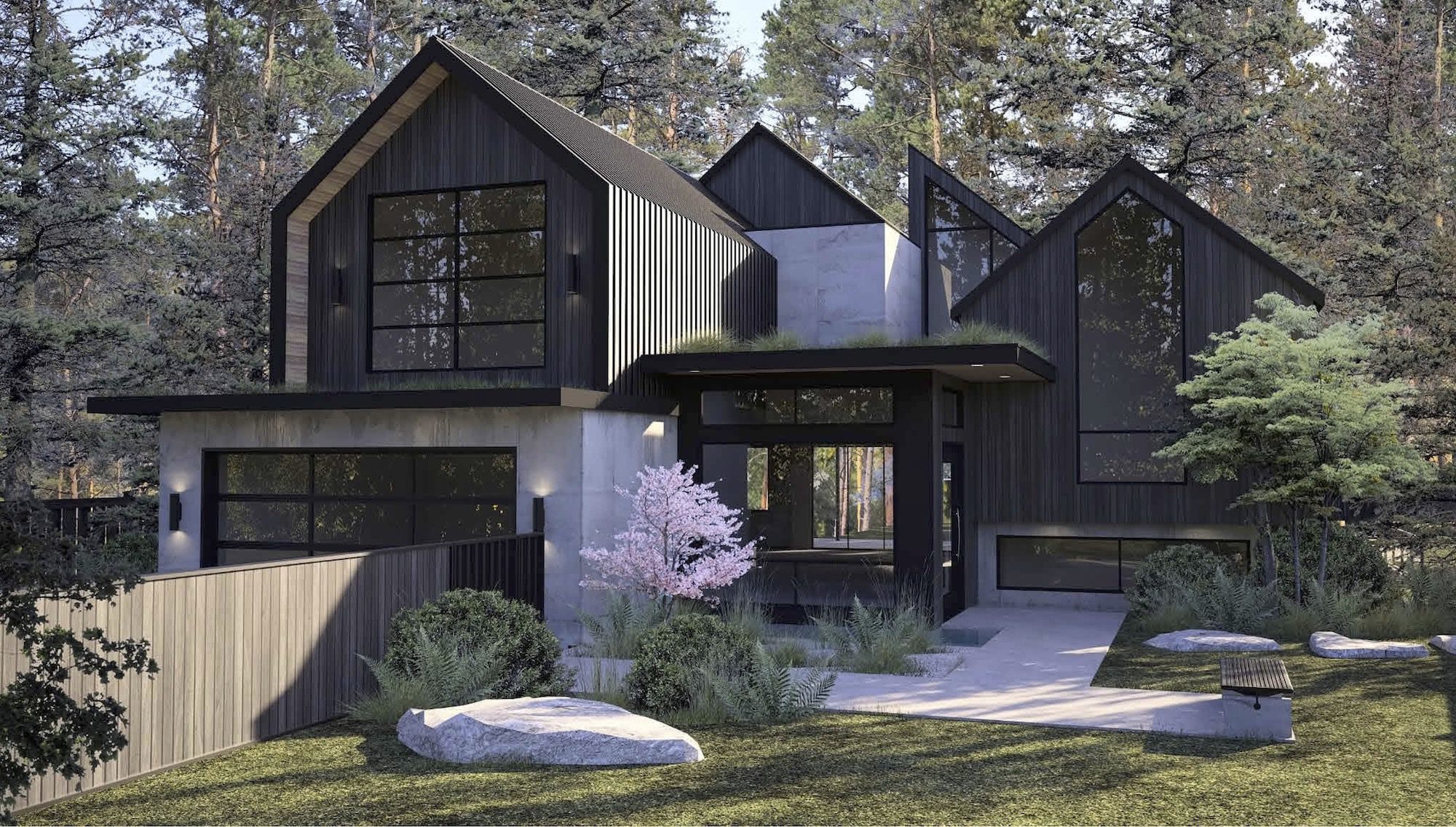Are you renovating or building a custom home? If so, you’re probably curious about architectural home styles and which is the right choice for you. To help you decide, we’ve compiled a list of the most popular architectural styles in Vancouver and the surrounding areas.
In this article, our home-building experts will discuss various home styles and their defining characteristics. Plus, we’ll share insight into how to choose the best style for your home.
Ready to explore popular Vancouver architectural home styles? Let’s take a look.
Content Quick Links:
What is architectural style?
How many architectural styles are there?
Popular Architectural Home Styles
How to Choose a Style for Your Home
What is architectural style?
The term “architectural style” refers to the features and characteristics that differentiate buildings and structures. In other words, the combination of features that make a building (in this case, a home) aesthetically distinct.
For example, some of the key elements that determine the architectural style of a home include:
- Structural design – the overall shape and structure of the home (e.g., use of arches, columns, domes, beams).
- Aesthetics – the decorative details of the home (e.g., mouldings, carvings, motifs).
- Roof – the shape, design and materials used for the roof (e.g., gabled, hipped, flat, domed).
- Windows and doors – the size, shape, and placement of windows and doors.
- Building materials – the types of materials used in construction (e.g., wood, stone, brick, concrete, glass, steel).
- Construction method – the techniques and processes used to build the home (e.g., timber frames, masonry, modular construction).
- Regional character – the influence of the local geography, climate, culture, and history on the home’s design and construction.
Each distinct architectural style incorporates a unique combination of these elements.
How many architectural home styles are there?
While it’s difficult to pinpoint the exact number of architectural styles, we can tell you that there are over 30!
However, history, culture, environment, and technological advancements influence home styles. Thus, with technology constantly evolving, the number of architectural home styles is ever-growing.
9 Popular Architectural Home Styles in Vancouver
Wondering – what is the most popular home style in the Vancouver area? Well, this depends on the area and neighbourhood you’re in. That said, some architectural styles are more popular than others across locations.
Below is a list of the most popular home styles in Vancouver, North Vancouver, West Vancouver, Burnaby, Squamish, and the surrounding areas. In addition to describing and identifying the key characteristics of each architectural home style, we’ve included local examples for inspiration!
Like one of the custom homes you see below? Contact our team to learn more about it!
1. Farmhouse
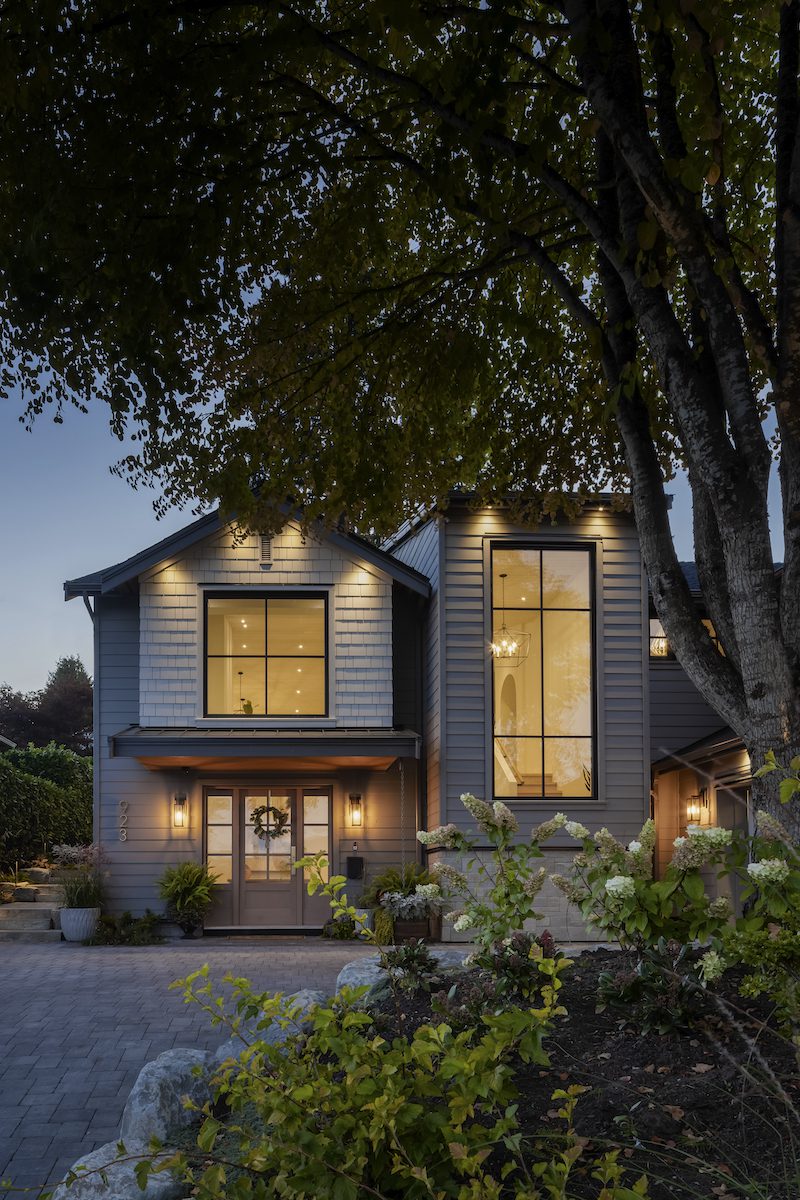
As you may have guessed, the Farmhouse architectural style is inspired by historic farmhouses. This home style offers functionality, versatility, comfort, and timeless appeal. As a result, it’s a popular choice for a wide range of homeowners in Vancouver.
Some key characteristics of the Farmhouse architectural home style include:
- Simple, rectangular shape (sometimes with additional wings or extensions).
- Large, covered porches.
- Steep, gabled roofs (sometimes with dormer windows).
- Oversized windows.
- Open floor plan.
- Rustic elements (e.g., exposed wood beams, reclaimed wood).
Farmhouse homes commonly incorporate functional spaces like mudrooms, large kitchens, and built-in storage. As a result, this architectural style is ideal for families.
2. Modern
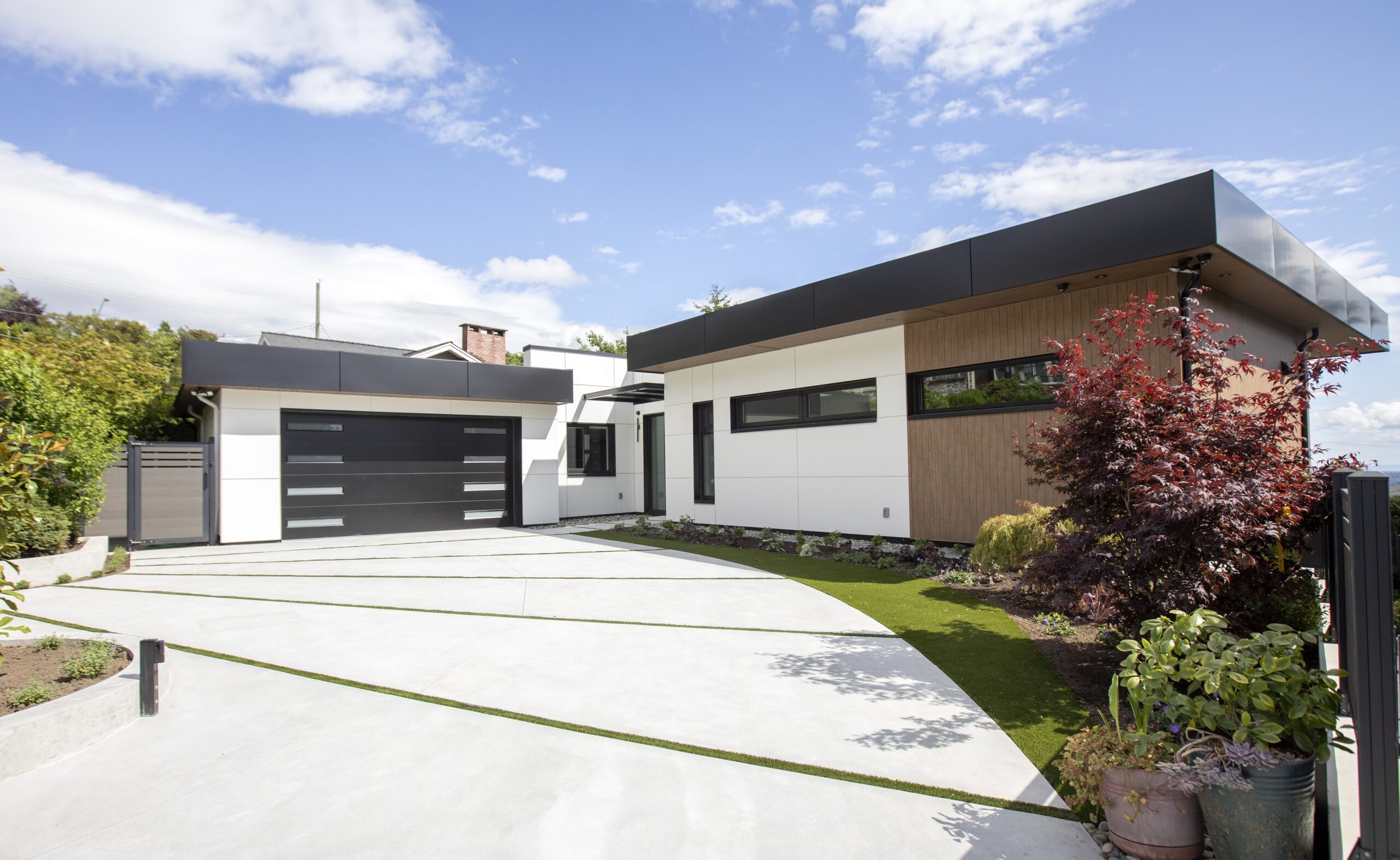
The building materials and technological advancements introduced during the Industrial Revolution inspired the Modern architectural style. This home style emphasizes simplicity, functionality, sustainability, and the efficient use of space.
Some key characteristics of the Modern architectural home style include:
- Clean lines, geometric shapes, and no unnecessary detailing.
- Open floor plan.
- Large windows (often floor-to-ceiling).
- Flat or gently sloping roof.
- Modern building materials (e.g., steel, glass, concrete).
- Integration with the natural surroundings (.e.g., expansive patios and decks, indoor-outdoor spaces).
- Sustainability (e.g., energy-efficient design, renewable building materials, integration of green technologies).
The inclusion of large open areas and seamless indoor-outdoor spaces makes the Modern architectural style a common choice for homeowners who like to entertain.
3. Modern Farmhouse

A Modern Farmhouse combines the rustic charm of a traditional farmhouse with the simple, clean lines and contemporary features found in a modern home.
Some key characteristics of the Modern Farmhouse architectural home style include:
- A blend of traditional farmhouse elements (e.g., gabled roofs, large porches, rustic materials) and modern touches (e.g., clean lines, minimalist interiors).
- Large windows (often in grid patterns).
- Open floor plan.
- Mixed building materials (e.g., wood, metal, glass, reclaimed wood beams, metal roofing).
Like a Farmhouse, Modern Farmhouse-style homes commonly include functional spaces like mudrooms, spacious kitchens, and built-in storage solutions. As a result, this home style is also suitable for families.
4. Scandinavian
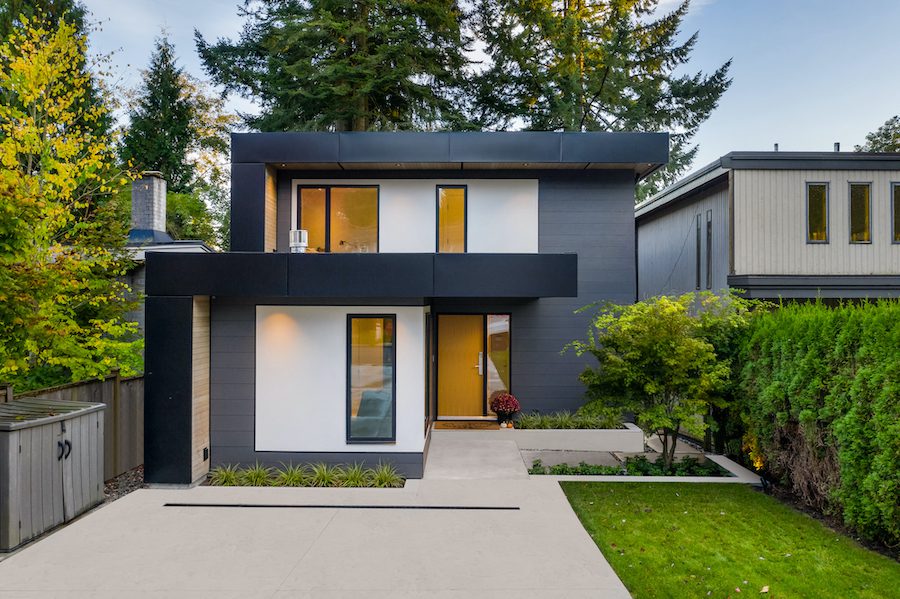
The Scandinavian architectural style is inspired by design traditions in countries like Denmark, Sweden, Norway, and Finland. Scandinavian-style homes emphasize simplicity, functionality, and a deep connection to nature.
Some key characteristics of the Scandinavian architectural home style include:
- Clean, streamlined, minimalist design.
- Natural and sustainable building materials (e.g., wood, stone).
- Large windows.
- Open spaces and indoor-outdoor environments.
- Sustainable and eco-friendly construction methods.
The Scandinavian architectural style is popular in Vancouver and the surrounding areas. It’s a common choice for families, eco-conscious homeowners and individuals who value a minimalist aesthetic.
What’s the difference between a Scandinavian-style home and a Modern home?
Like modern homes, the Scandinavian architectural style uses clean lines and a minimalist aesthetic. However, Scandinavian-style homes typically incorporate more natural materials, like wood and stone, than Modern homes, which primarily use modern building materials like glass, steel and concrete.
5. Mid-Century Modern
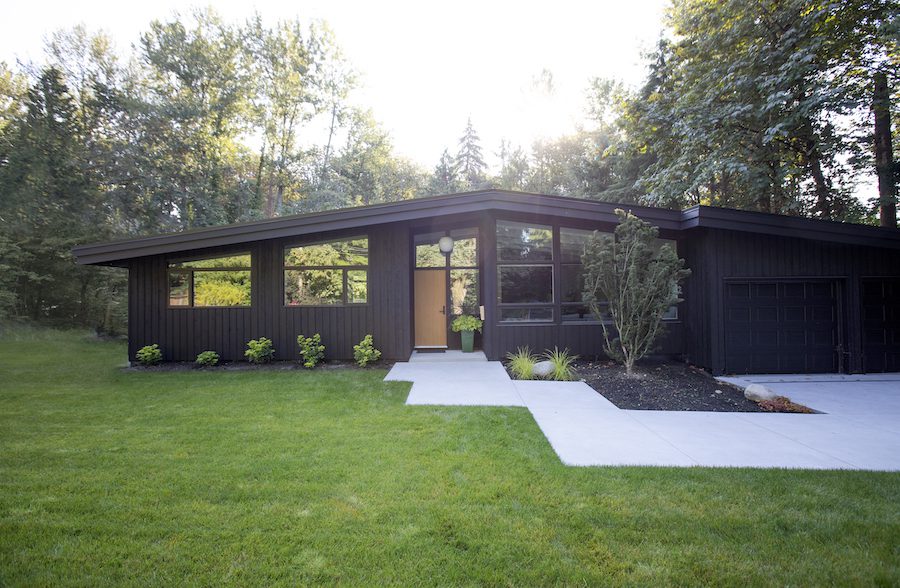
Post-WWII optimism, technological advances, and a desire for simple living inspired Mid-Century Modern architecture. This home style emphasizes functional design, efficiency, and integration with nature.
Some key characteristics of the Mid-Century Modern architectural home style include:
- Sleek, modern aesthetic.
- Simple, clean lines and geometric shapes.
- Minimal decorative elements.
- Open floor plans.
- Large windows (often floor-to-ceiling windows).
- Integration with nature (e.g., indoor-outdoor spaces, patios, decks).
- Exposed beams.
- Flat or low-sloping roof.
- Natural building materials (e.g., wood, metal, glass, stone).
The open floor plan, adaptable spaces, and bright and airy interior of a Mid-Century Modern home make it ideal for families and anyone who loves entertaining.
What’s the difference between Modern and Mid-Century Modern architectural home styles?
Modern and Mid-Century Modern architecture are very similar. Both emphasize functionality, clean lines, and integration with nature. However, while Modern homes often use industrial building materials, like steel and concrete, Mid-Century Modern homes typically use more natural materials, like wood and stone. As a result, Mid-Century Modern homes often feel warmer and appear less stark.
6. Rancher
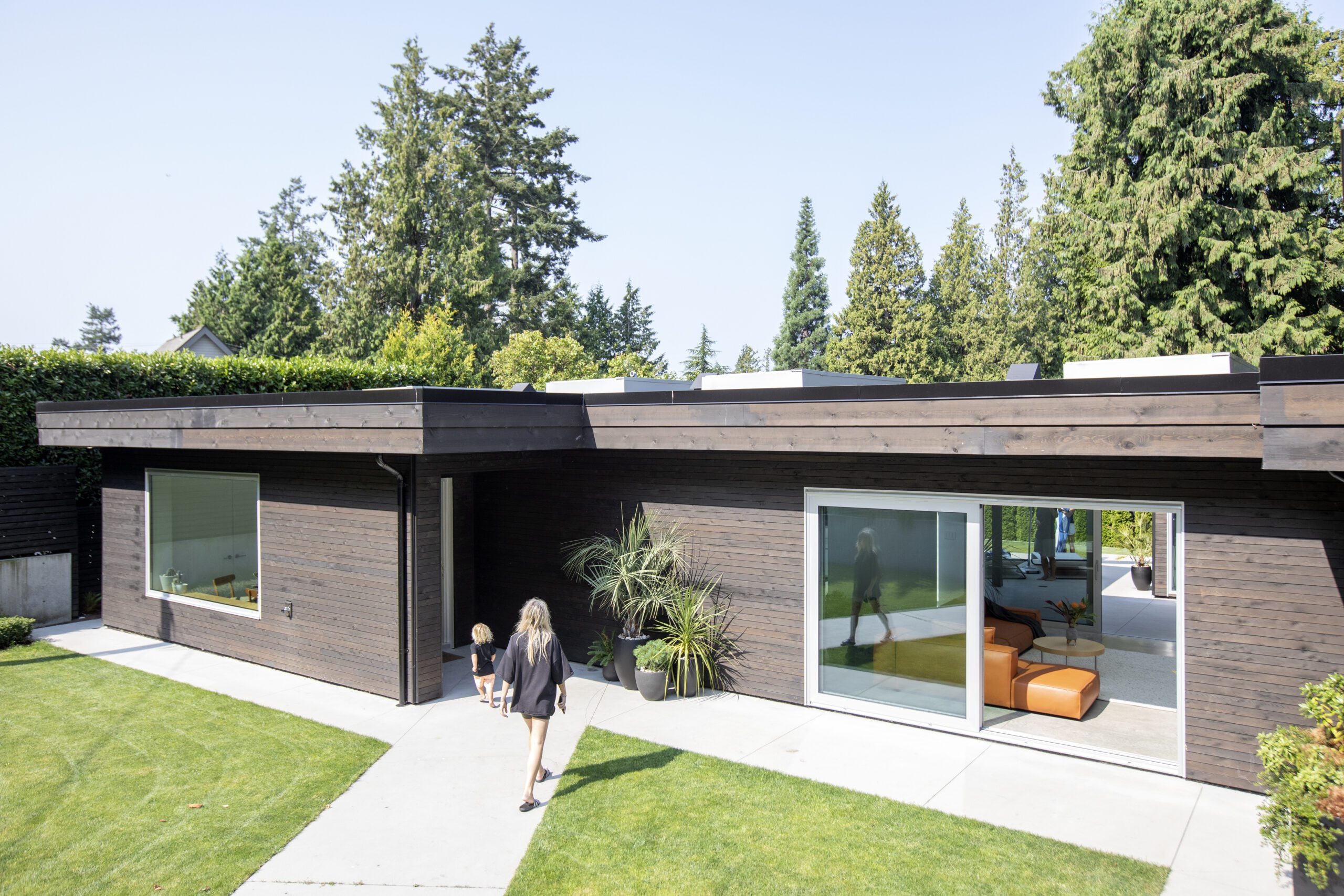
The Rancher architectural style originated in California in the 1930s. This home style emphasizes simplicity, functionality, and integration with the surrounding landscape.
Some key characteristics of the Rancher architectural home style include:
- Single-story layout.
- Long, low profile.
- Wood frame construction.
- Open floor plan.
- Large windows and sliding glass doors.
- Low-pitched roof.
- Integration with nature (e.g., patios, decks).
- Durable and low-maintenance building material (e.g., brick, stone, stucco).
- Simple, functional design with minimal ornamentation.
A Rancher’s open, accessible layout and single-story design make it ideal for families, older adults, and individuals with mobility challenges.
7. Craftsman
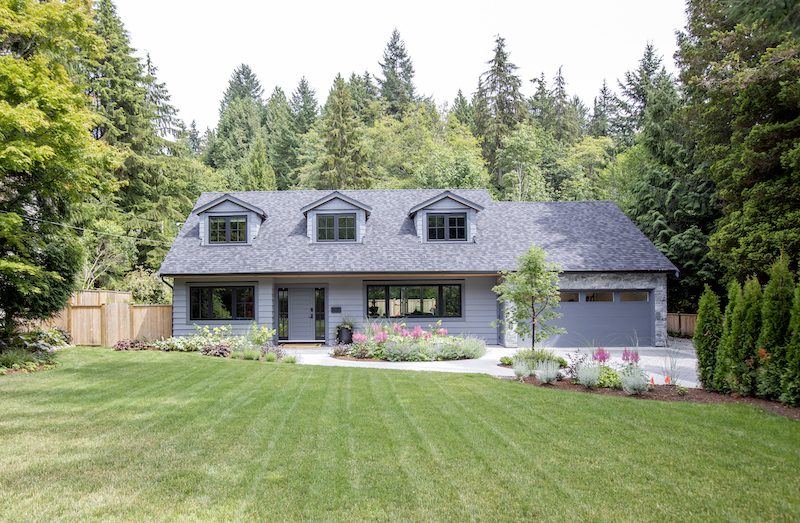
Craftsman-style homes first appeared in Britain in the 1860s and arrived in Vancouver in the early 1900s (approximately 1908-1910). Distinguished by attention to detail, quality craftsmanship, and the use of high-quality, local materials, Craftsman-style homes are still popular in the Vancouver area.
Some key characteristics of the Craftsman architectural home style include:
- Low-pitched, gabled roof with wide overhanging eaves and exposed rafters.
- Wood frame construction.
- Prominent front porch with thick, tapered columns or pedestals.
- Natural building materials (e.g., wood, stone, brick).
- Extensive use of natural wood (often for built-in furniture, cabinetry, and trim).
- Exposed structural elements (e.g., beams, brackets).
- Open floor plan.
A Craftsman home’s warm, inviting ambiance and functional design make it a suitable architectural design choice for families. In addition, the focus on quality construction and building materials makes it ideal for anyone looking for a home built to last!
8. West Coast Modern
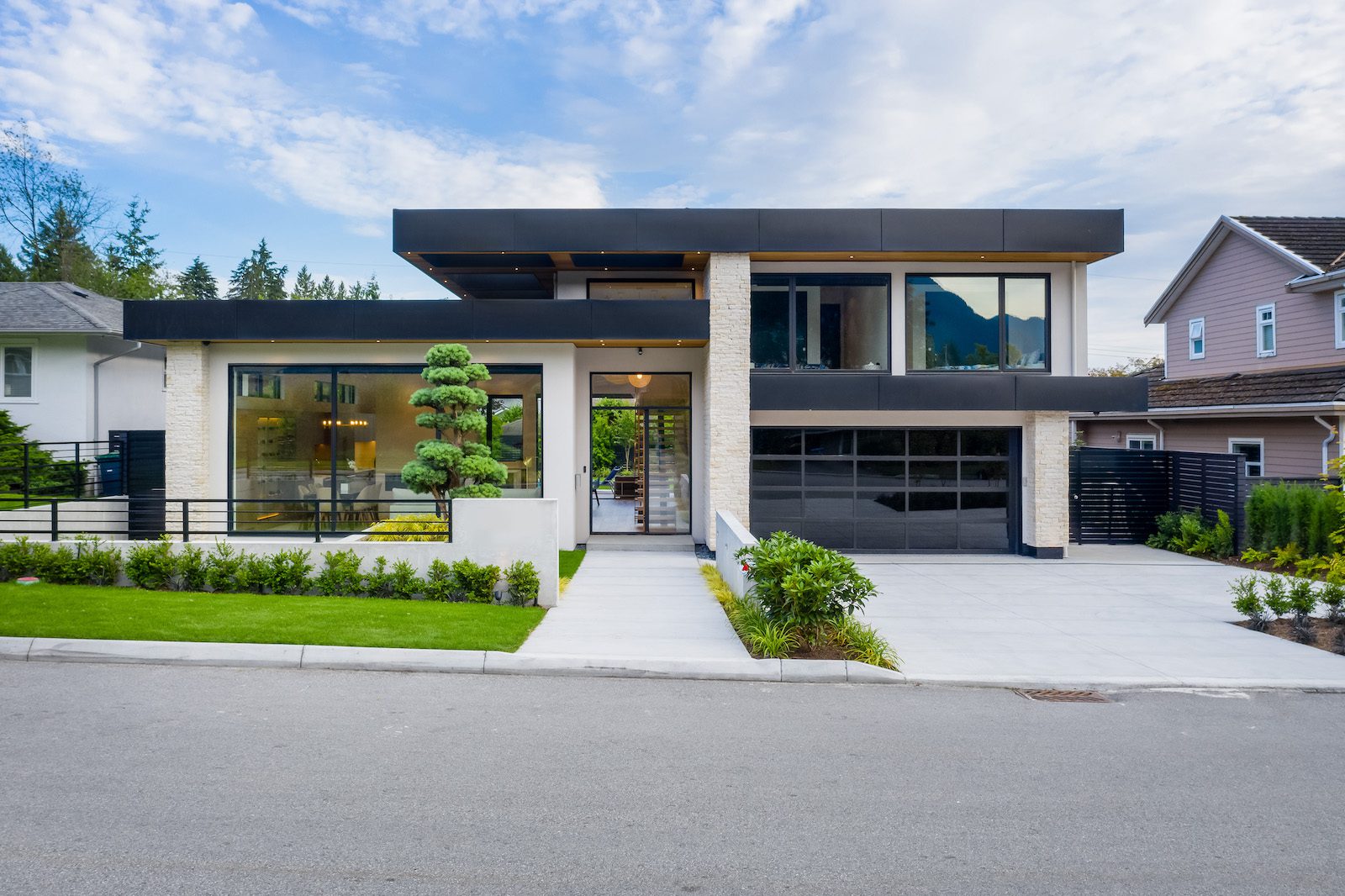
The West Coast Modern style, also known as West Coast Contemporary, first emerged in the 1930s. This architectural home style focuses on integration with nature (and the home’s natural surroundings), the use of natural materials, and indoor-outdoor living. West Coast Modern homes are particularly popular in the Pacific Northwest, including Vancouver, North Vancouver, West Vancouver, Burnaby, Squamish and the surrounding areas.
Some key characteristics of the West Coast Modern architectural home style include:
- Post and beam construction.
- Integration with nature.
- Skylights and large windows (extensive use of floor-to-ceiling windows to maximize natural light and provide unobstructed views of the surrounding landscape).
- Use of local and natural building materials (e.g., wood, stone, glass).
- Flat or low-sloping roof.
- Open floor plan.
- Modern aesthetic with clean lines and minimal ornamentation.
- Outdoor living spaces (e.g. patios, decks, terraces).
- Sustainable and energy-efficient design and construction techniques.
West Coast Modern-style homes are known for their open and spacious interiors, indoor-outdoor areas, and functional spaces. As a result, this popular home style is a top choice among families, entertainers, nature lovers, and individuals committed to sustainable living.
9. Contemporary
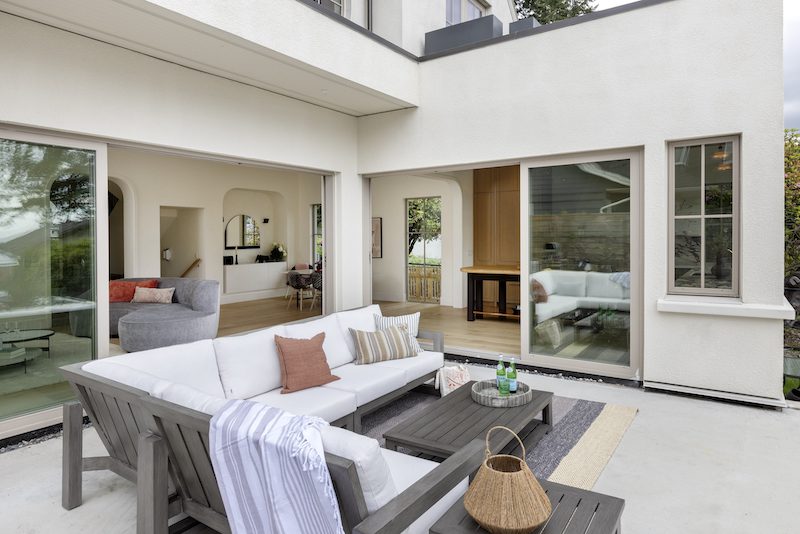
Contemporary architecture is not tied to any particular time period. Rather, it is based on current design and building trends.
Presently, Contemporary-style homes offer a blend of modern design, functionality, and sustainability and incorporate the use of modern technology. As a result, this architectural home style is a versatile and appealing option for Vancouver homeowners.
Some key characteristics of the Contemporary architectural style include:
- Minimalist design.
- Clean lines.
- Large windows and extensive use of glass (for natural light).
- Flat or gently sloping roof.
- Use of modern and sustainable building materials (e.g., steel, glass, concrete, bamboo, recycled metal).
- Spacious and open floor plan.
- Incorporation of modern technology (e.g., smart home technology).
- Use of sustainable and energy-efficient design, building practices, and systems.
Contemporary and Modern-style homes are very similar – so much so that it may be difficult to tell them apart when looking at images. That said, there is one significant difference between these home styles.
What’s the difference between Contemporary and Modern architectural home styles?
Like Modern architecture, Contemporary architecture emphasizes clean lines, functional design, minimalism, and the use of modern building materials. However, unlike Modern-style homes, Contemporary-style homes reflect current architectural and design trends. As a result, the Contemporary style evolves with time, incorporating the latest technologies and design practices. Therefore, what is considered Contemporary now may not be 10 or 20 years from now!
Which Architectural Home Style is Right for You? Here’s How to Choose.
Not sure how to choose an architectural style for your custom home or renovation? Here are some tips from our custom home builders.
Consider the local climate and surrounding landscape.
When choosing an architectural home style, it’s essential to consider the local environment and how you want your home to integrate with the natural landscape.
For example, in Vancouver, you’ll need to consider what types of homes hold up well against rain and, possibly, snow. If you want your home to integrate with the natural surroundings, consider a style that incorporates indoor-outdoor spaces and natural building materials.
Determine the functionality you require based on your lifestyle.
When renovating or building a custom home, it’s important to consider how you spend your time and the spaces you’ll need to live a happy, comfortable life.
For example, do you have a large family or enjoy entertaining? If so, a style incorporating an open floor plan and indoor-outdoor spaces might be suitable.
Evaluate your aesthetic preferences.
Your taste in architecture should be a primary consideration when choosing an architectural home style.
For instance, if you love the look of a clean, minimalist design, a Scandinavian or Modern-style home might be right for you. On the other hand, if you appreciate handcrafted details, a Craftsman-style home may be more suitable.
Consider the sustainability and eco-friendliness of different architectural home styles.
If you want your home to be sustainable and eco-friendly, consider an architectural home style that incorporates sustainable materials and energy-efficient design.
For example, Scandinavian-style homes typically use natural and sustainable building materials and eco-friendly construction processes.
Look to the future.
To ensure your newly renovated or custom-built home provides efficient and functional living for years to come, choose a home style that can adapt to your future needs.
For example, a home with an open floor plan is much easier to reconfigure than one with a more traditional segmented layout.
Don’t forget about maintenance.
Some architectural home styles require more maintenance and upkeep than others. So, be sure to choose a style that suits your maintenance preferences (and budget).
For example, a Modern-style home with clean lines and minimal exterior detailing may be easier to maintain than a more ornate Craftsman-style home. In addition, some building materials are easier to upkeep than others. Stone or brick exteriors, for instance, often require less maintenance than wood or glass.
Consider resale value.
Whether you intend to sell your home in the near or distant future, it’s important to consider resale value.
Some architectural home styles may be more appealing in certain areas. Therefore, by choosing a popular style, you can ensure the long-term value of your investment.
Still not sure which architectural home style to choose? Get expert advice.
Need help deciding which architectural style best suits your needs, preferences, and future requirements?
Schedule a meeting with Hasler’s team of architects and homebuilders. We’ll discuss your preferences and needs, show you other custom homes in Vancouver, and help you design a house perfect for your lifestyle!
Build Your Dream Home with Hasler Homes
Ready to build your dream home? We’re ready to help you get started, whichever architectural home style you choose.
Our designers, architects and custom home builders have experience crafting stunning and functional homes in all popular Vancouver architecture styles.
Contact us today to learn more about how we can help you build your dream home!
